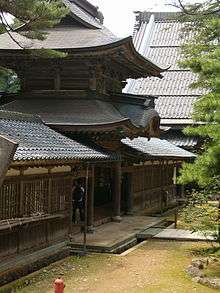Meditation in Japan
Understand

Buddhism entered Japan from China, and although there was an almost continuous flow of philosophical and religious thought between the two countries over many centuries, it can be said that Buddhism arrived in three waves: during the Nara period (up to 784 C.E.), Heian period (794–1185 C.E.) and the post-Kamakura period (from 1185 C.E.).
During the Nara period, the main schools that arrived were the Kegon (華厳) and Hosso (Yogacara; 瑜伽行派) . The Heian period saw the arrival of Tendai (天台) and the esoteric school of Shingon (眞言), while the latter wave brought the more faith based schools of Jodo Shu (Pure Land School; 浄土宗) and Jodo Shinshu (浄土真; True Pure Land School) and the various Zen Schools (禅宗).
Among the various schools of Buddhism that took root in Japan, perhaps Zen is the most well known overseas, and in many ways Zen and Japanese culture are synonymous. Japanese gardens, tea ceremony and martial arts were all either direct expressions of the Zen spirit or were greatly influenced by it. Perhaps as a result of its overseas fame, the majority of overseas visitors who come to Japan to study meditation will do so at a Zen monastery. The other school that has attracted some overseas interest is Shingon, though not to the same extent as Zen.
Many monasteries offer multi-day meditation courses for the lay community, though only a few cater to non-Japanese speakers. Below is a list of those that have provision for overseas visitors. NB: This list serves only as a 'pointer.' More detailed information is available on the city or prefecture article where the temple is located.
Prepare
Few monasteries entertain trainees who arrive without prior notice, so it is important to first contact the monastery to discuss your plans. This can be done by written correspondence or phone. Some monasteries do not charge guests, though many do. Check the nightly rate before making long term plans.
As a resident you are required to participate in the schedule 100% fully, and this can be quite rigorous. In addition to long periods of meditation, there are many hours devoted to physical labor. Visitors should be aware of the schedule before arriving.
Prepare loose clothing suitable for sitting in lotus posture, such as full-length skirts or loose-fitting trousers, and durable clothing for working outdoors. Shorts or clothing that is tight or low cut should be avoided. In addition, as many monasteries are in the mountains, ensure to bring warm clothing, even in the summer.
Temples that offer multi-day meditation courses
Categorized according to tradition.
Rinzai Zen
Predominant in the Kyoto region. A specialty of Rinzai is the use of the koan (公案) - a question that cannot be answered by intellectual means, but relies on intuitive understanding. Famous koans are 'what is the sound of one hand clapping' and 'what was your face before you were born.'
Shingon
An esoteric school, Shingon utilizes many methods similar to those used in Tibetan Buddhism. In particular, the use of visualizing seed syllables as a means to transform the mind is a common practice.
Soto Zen
Prevalent throughout Japan, Soto is known for its method of sitting called shikantaza (只管打坐) – just sitting. The practitioner is trained to be alert, and at the same time to let thoughts come and go without either attachment or suppression. The Soto website lists a number of temples open to foreigners, although the level of facilities available in English vary widely. Some picks:
- Antaiji (安泰寺), in Hyōgo prefecture.
- Eiheiji (永平寺), in Fukui prefecture. Intensive 2 and 3-day meditation retreats.
Temples that offer meditation lessons to visitors
- Rinnoji (輪王寺), Sendai. Meetings are held every Sa 6:30PM-8PM. Instruction is given in English and participation is free. No accommodation available.
- Shunkoin (春光院), Kyoto. Meditation lessons daily at 9:00,10:40 and 13:30 with temple tour (total of 90 minutes), conducted by an American-educated abbot. Overnight accommodation also available.
- Sojiji' ((總持寺), Yokohama. Irregular meditation sessions. Check website for schedule.
- Tōshōji (東照寺), Shinagawa, Tokyo. Free morning sessions every weekday from 5 AM, free Zen sessions every Saturday at 6 PM. Also runs 5-day training sessions (¥3000/day) in April and December.